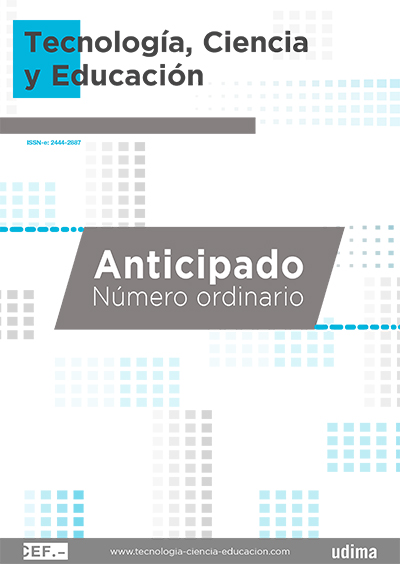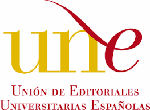Relationship between the use of artificial intelligence and the inclusion of students with disabilities in the classroom from the perspective of teachers
DOI:
https://doi.org/10.51302/tce.2025.24463Keywords:
artificial intelligence use, educational inclusion, disability, Uruguayan teachers, technological tools, teacher perception, teaching experienceAbstract
This quantitative study analyzes the relationship between the use of artificial intelligence tools and the perceived improvement in the inclusion of students with disabilities, based on the perspectives of 150 Uruguayan primary and secondary educators. Results indicate that 60% of teachers who frequently used artificial intelligence perceived significant improvements, compared to 20 % of those who did not. A significant relationship between the variables was found (x² = 25.34; p = 0.001) with a strong positive correlation (r = 0.72). Moreover, teachers with over 10 years of experience reported greater perceived benefits (F = 4.56; p = 0.012). These findings suggest that artificial intelligence can be a valuable tool for promoting inclusion, though larger samples and longitudinal studies are recommended to confirm these results.
Downloads
References
Andrés, J. E. (2024). Hacer docencia, inteligencia artificial e inclusión educativa. Una revisión conceptual. III Congreso Internacional de Ciencias Humanas. Escuela de Humanidades/ Universidad Nacional de San Martín, Argentina. https://www.aacademica.org/3.congreso.eh.unsam/114
Area Moreira, M. (2018). De la enseñanza presencial a la docencia digital. Autobiografía de una historia de vida docente. RED. Revista de Educación a Distancia, 18(56), 1-21. https://revistas.um.es/red/article/view/320691
Crespo Obaco, J. P. y Benavides Bailón, J. (2024). Beneficios y desafíos de los asistentes virtuales en el aprendizaje. LATAM. Revista Latinoamericana de Ciencias Sociales y Humanidades, 5(2), 685-700. https://doi.org/10.56712/latam.v5i2.1909
Forero-Corba, W. y Bennasar, F. N. (2024). Técnicas y aplicaciones del machine learning e inteligencia artificial en educación: una revisión sistemática. RIED. Revista Iberoamericana de Educación a Distancia, 27(1), 209-253. https://doi.org/10.5944/ried.27.1.37491
García-Peñalvo, F. J. (2024). Inteligencia artificial generativa y educación: un análisis desde múltiples perspectivas. EKS. Education in the Knowledge Society, 25, 1-10. https://doi.org/10.14201/eks.
García Sánchez, O. V. (2023). Uso y percepción de ChatGPT en la educación superior. RITI. Revista Investigación en Tecnologías de la Información, 11(23), 98-107. https://doi.org/10.36825/RITI.11.23.009
Howorth, S. (2024). Artificial intelligence in special education teacher preparation. Journal of Special Education Preparation, 4(2), 4-5. https://doi.org/10.33043/c59c7aa9
Howorth, S. K., Marino, M. T., Flanagan, S., Cuba, M. J. y Lemke, C. (2024). Integrating emerging technologies to enhance special education teacher preparation. Journal of Research in Innovative Teaching & Learning, ahead-of-print (ahead-of-print). https://doi.org/10.1108/JRIT-08-2024-0208
López-Belmonte, J., Moreno-Guerrero, A. J., Pozo-Sánchez, S. y López-Núñez. (2020). Efecto de la competencia digital docente en el uso del blended learning en formación profesional. Investigación Bibliotecológica, 34(83), 187-205. https://doi.org/10.22201/iibi.24488321xe.2020.83.58147
Menacho Ángeles, M. R., Pizarro Arancibia, L. M., Osorio Menacho, J. A., Osorio Menacho, J. A., León Pizarro, B. L., Menacho Ángeles, M. R., Pizarro Arancibia, L. M., Osorio Menacho, J. A. [Julio Ancelmo], Osorio Menacho, J. A. [Juan Alexandra] y León Pizarro, B. L. (2024). Inteligencia artificial como herramienta en el aprendizaje autónomo de los estudiantes de educación superior. Revista InveCom, 4(2), 1-10. https://doi.org/10.5281/zenodo.10693945
Montero, L. y Gewerc, A. (2018). La profesión docente en la sociedad del conocimiento. Una mirada a través de la revisión de investigaciones de los últimos 10 años. RED. Revista de Educación a Distancia, 56(3), 1-22. http://dx.doi.org/10.6018/red/56/3
Nilsson, N. J. (2009). The Quest for Artificial Intelligence. Cambridge University Press. https://doi.org/10.1017/CBO9780511819346
Omair A. (2014). Sample size estimation and sampling techniques for selecting a representative sample. Journal of Health Specialties, 2(4), 142-147.
Petko, D. (2012). Teachers´ pedagogical beliefs and their use of digital media in classrooms: sharpening the focus of the «will, skill, tool» model and integrating teacher´s constructivist orientations. Computer & Education, 58(4), 1.351-1.359. https://doi.org/10.1016/j.compedu.2011.12.013
Petrick, E. (2015). Make Computer Accessible: Disability Rights and Digital Technology. John Hopkins University Press.
Romero García, M.ª C. y Alonso-Secades, V. (2025). Perceptions, strategies, and challenges of teachers in the integration of artificial intelligence in primary education: a systematic review. Journal of Information Technology Education: Research, 24, 1-48. https://doi.org/10.28945/5458
Santaella, L. (2021). Inteligência artificial e cultura: oportunidades e desafios para o sul global. Foro abierto de Ciencias de América Latina y Caribe (CILAC)/Oficina de Montevideo/ Organización de las Naciones Unidas para la Educación, la Ciencia y la Cultura. https://cetic.br/media/docs/publicacoes/8/20210429155321/policy_paper_inteligencia_artificial_e_cultura.pdf
Santillán de la Torre, C. A., Silva López, M.ª Á., Limongi Basantes, D. S. y Chango, E. A. (2024). El papel de la inteligencia artificial en la adaptación curricular: perspectivas para la mejora continua de la educación digital. Imaginario Social, 7(2), 261-270. https://doi.org/10.59155/is.v7i2.186
Sedgwick, P. (2012). Pearson´s correlation coefficient. BMJ, 345. https://doi.org/10.1136/bmj.e4483
Strietholt, R. y Johansson, S. (2023). Challenges for the design of international assessments: sampling, measurement, and causality. On Education. Journal for Research and Debate, 6. https://doi.org/10.17899/on_ed.2023.18.2
Troya Santillán, B. N., Ordoñez Lima, B. Y., Cuesta Pacheco, C. M., Armijos Condoy, M. A., Arzube Plaza, T. V. y Arzube Plaza, M.ª C. (2025). tecnologías emergentes y diseño universal para el aprendizaje: innovaciones para la inclusión de estudiantes con necesidades educativas específicas. Revista Científica de Salud y Desarrollo Humano, 6(1), 930-952. https://doi.org/10.61368/r.s.d.h.v6i1.517
UNESCO. (2020). Informe de seguimiento de la educación en el mundo 2020. Inclusión y educación: todos y todas sin excepción. https://doi.org/10.54676/WWUU8391
Valverde, R. Z. (2021). Una vista a las oportunidades y amenazas de la inteligencia artificial en la educación superior. Revista Académica Institucional, 3(2), 45-48. https://cms.usanmarcos.ac.cr/sites/default/files/2022-09/lectura-articulo-6-revista-rai-v.pdf
Villegas, W., Arias-Navarrete, A. y Palacios-Pacheco, X. (2020). Proposal of an architecture for the integration of a chatbot with artificial intelligence in a smart campus for the improvement of learning. Sustainability, 12(4), 1-20. https://doi.org/10.3390/su12041500
Downloads
Published
How to Cite
Issue
Section
License
Copyright (c) 2025 Domingo Walter Borba Franco, Cláudia Prioste, Juan Alejandro Henríquez, Cristian Adrián Villegas Dianta, Cristian Sepúlveda-Irribarra, Beatriz Alejandra Bustamante-Olivares

This work is licensed under a Creative Commons Attribution-NonCommercial-NoDerivatives 4.0 International License.

























